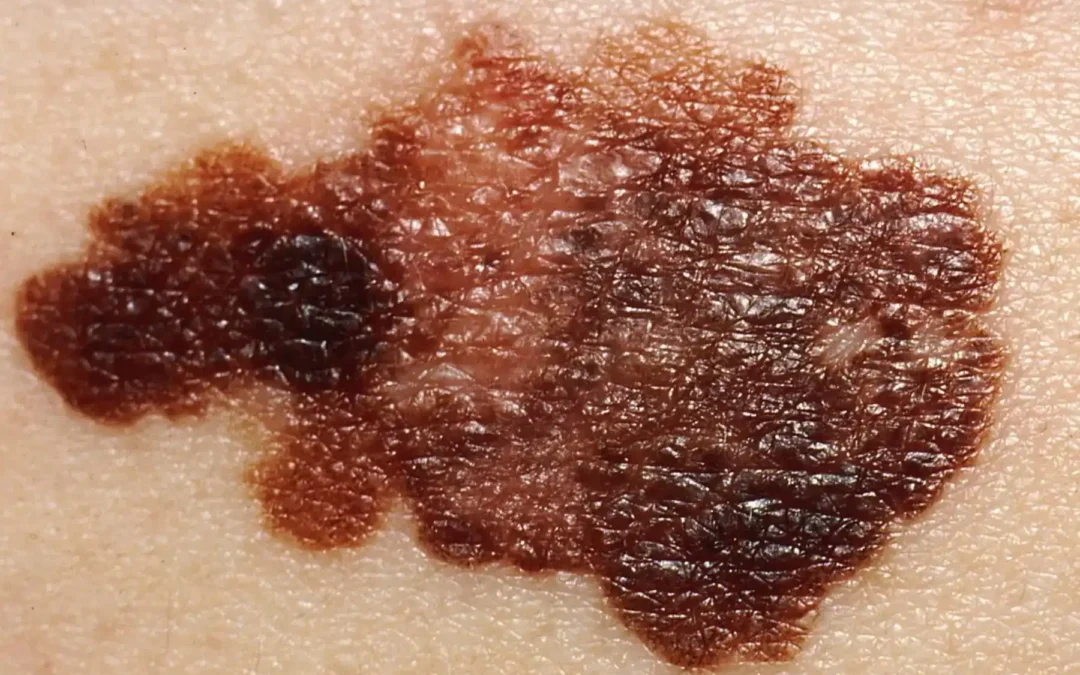Jump To Section
Skin cancer signs and symptoms are crucial to identify early, as skin cancer is the most common type of cancer in the UK, with thousands of cases diagnosed each year. Early detection and treatment can significantly improve outcomes, which is why it’s essential to understand the different types of skin cancer and their symptoms. In this blog, we will break down the three most common types of skin cancer:
- Basal cell carcinoma (BCC)
- Squamous cell carcinoma (SCC)
- Melanoma
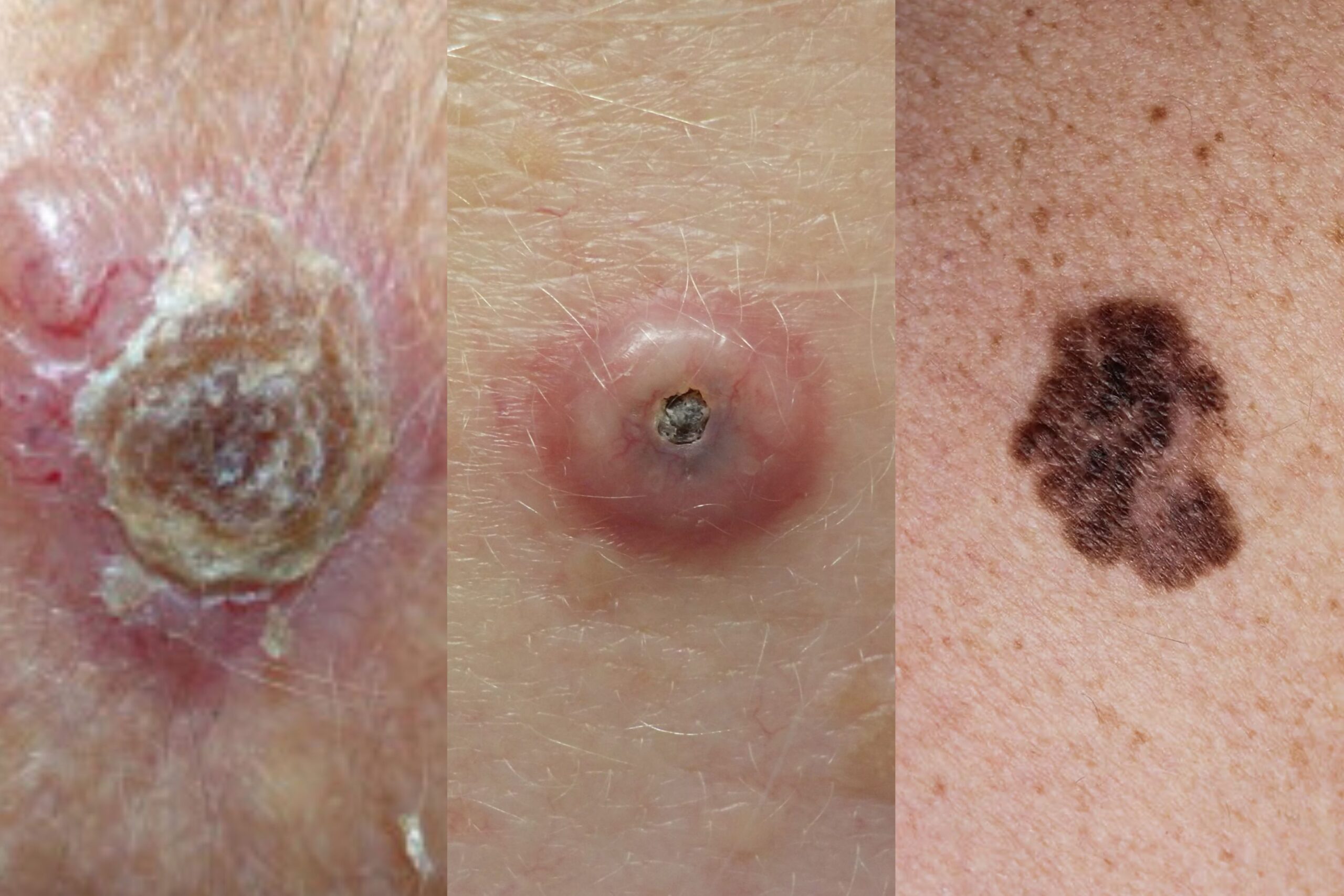
We’ll also discuss their risk factors, symptoms, and the importance of regular skin checks. By the end of this article, you’ll have a clearer understanding of what to look for, helping you take proactive steps toward your skin health.
What is Skin Cancer?
Skin cancer begins when skin cells start to grow uncontrollably. The cells may form abnormal growths or tumours, which can be either malignant (cancerous) or benign (non-cancerous). Skin cancer is primarily caused by UV radiation from the sun or tanning beds, which damages the DNA in skin cells. Over time, this damage can lead to mutations, triggering the uncontrolled growth of skin cells.

While skin cancer is the most commonly diagnosed cancer, it is also one of the most preventable. By protecting your skin from excessive sun exposure and checking your skin regularly for skin cancer signs and symptoms, you can reduce your risk of developing skin cancer. But first, it’s important to understand the three main types of skin cancer.
Basal Cell Carcinoma (BCC)
What is BCC?
Basal cell carcinoma is the most common type of skin cancer, accounting for around 80% of all skin cancer cases. It originates in the basal cells of the epidermis, which is the outer layer of the skin. BCC typically grows slowly and rarely spreads to other parts of the body, making it the least aggressive type of skin cancer.
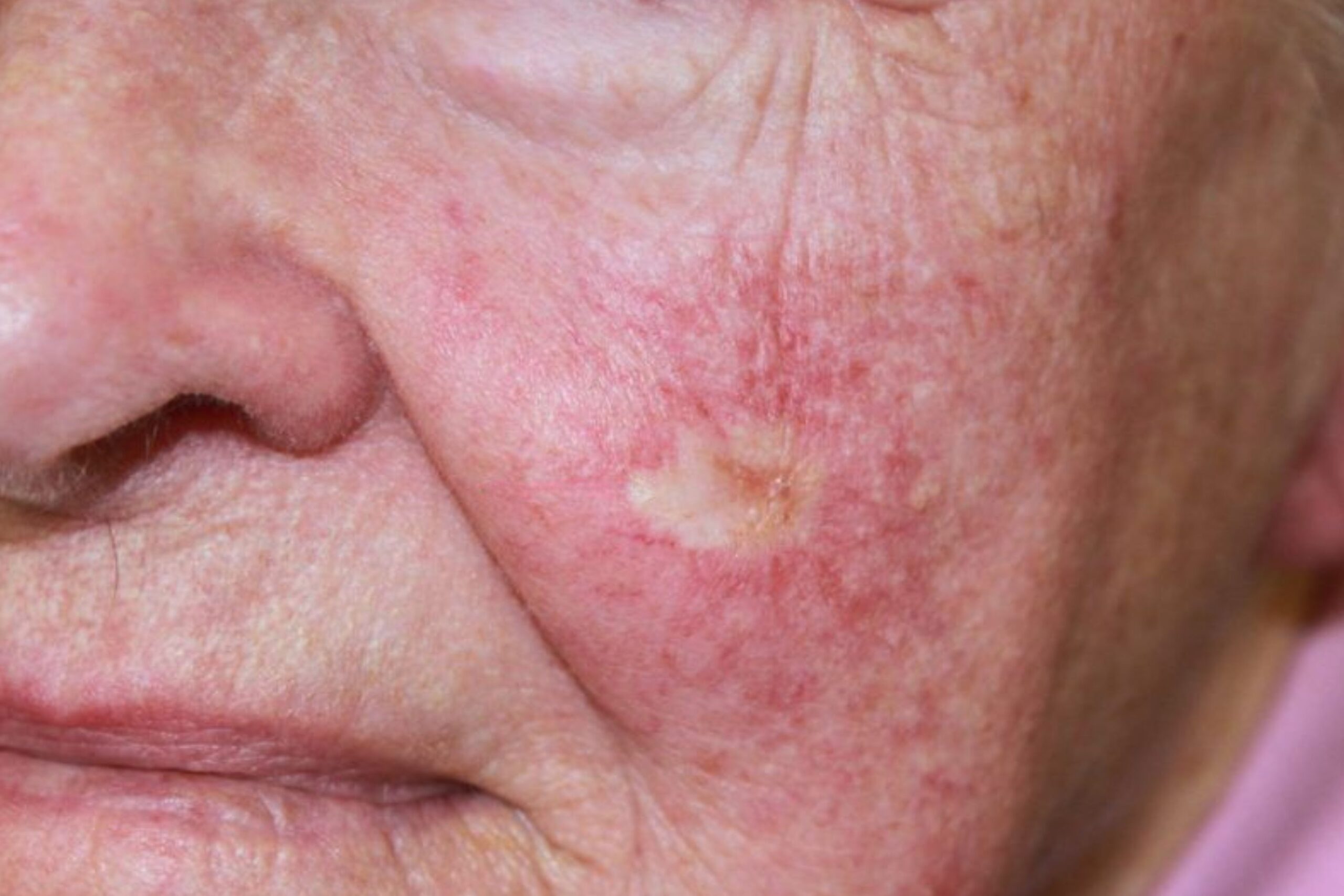
Risk Factors
- Sun Exposure: Prolonged exposure to ultraviolet (UV) radiation from the sun or tanning beds.
- Fair Skin: People with lighter skin, eyes, and hair are more likely to develop BCC.
- Age: The risk increases as you get older, especially after the age of 50.
- Weakened Immune System: Individuals with compromised immune systems are more susceptible to developing BCC.
Symptoms
Basal cell carcinoma often appears as a small, shiny, or waxy bump on the skin. It can also appear as a flat, scaly patch or a pink, red, or brown patch. Common areas affected by BCC are those exposed to the sun, such as the face, neck, ears, and hands.
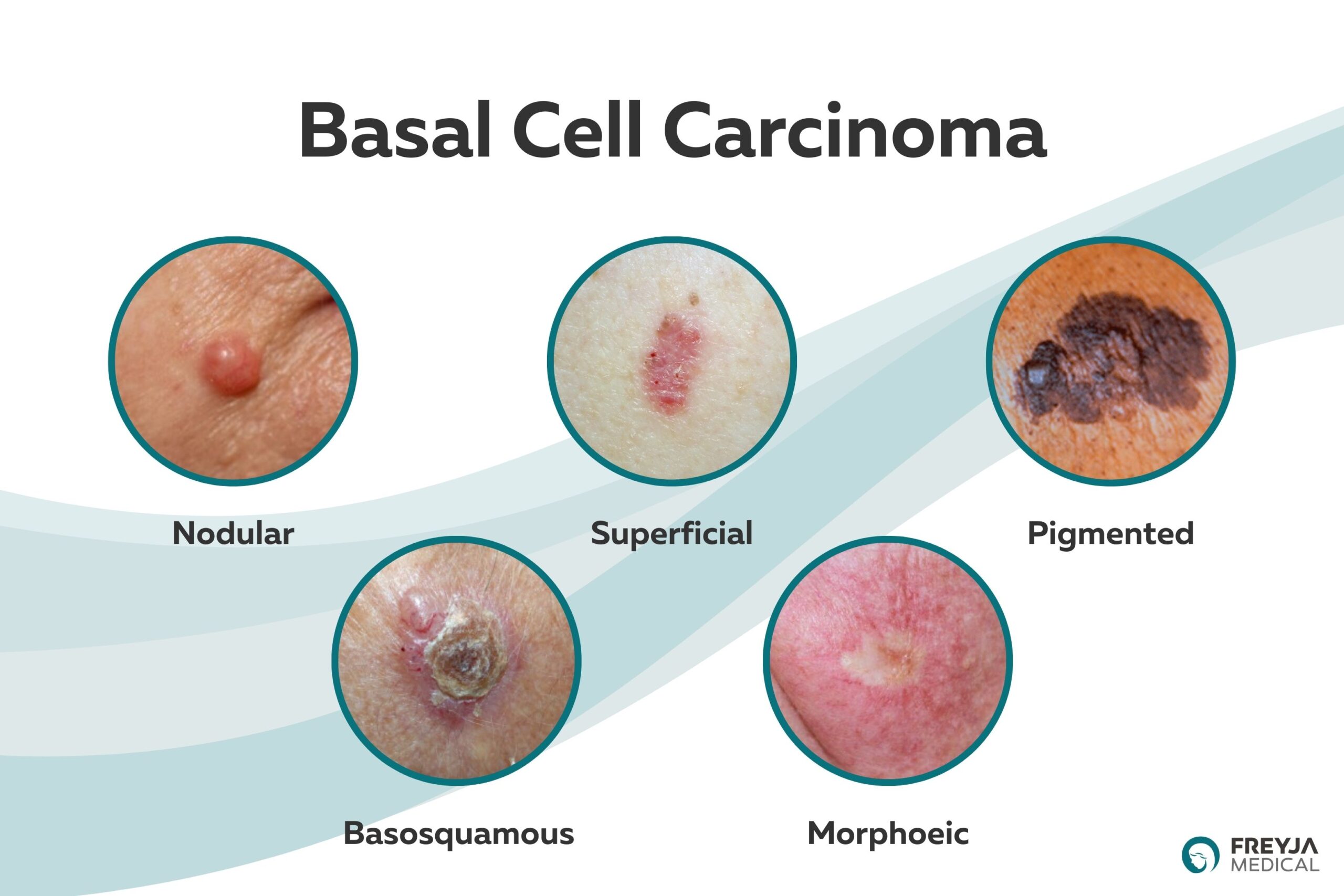
Treatment
BCC is highly treatable and is usually removed surgically. Other treatment options include cryotherapy (freezing the tumour), topical treatments, and radiation therapy. The key to successful treatment is early detection, which is why regular skin checks are essential.
Squamous Cell Carcinoma (SCC)
What is SCC?
Squamous cell carcinoma is the second most common type of skin cancer, accounting for about 20% of skin cancer cases. It arises from the squamous cells, which make up the middle and outer layers of the skin. SCC can be more aggressive than BCC and, in some cases, can spread to other areas of the body, including the lymph nodes.
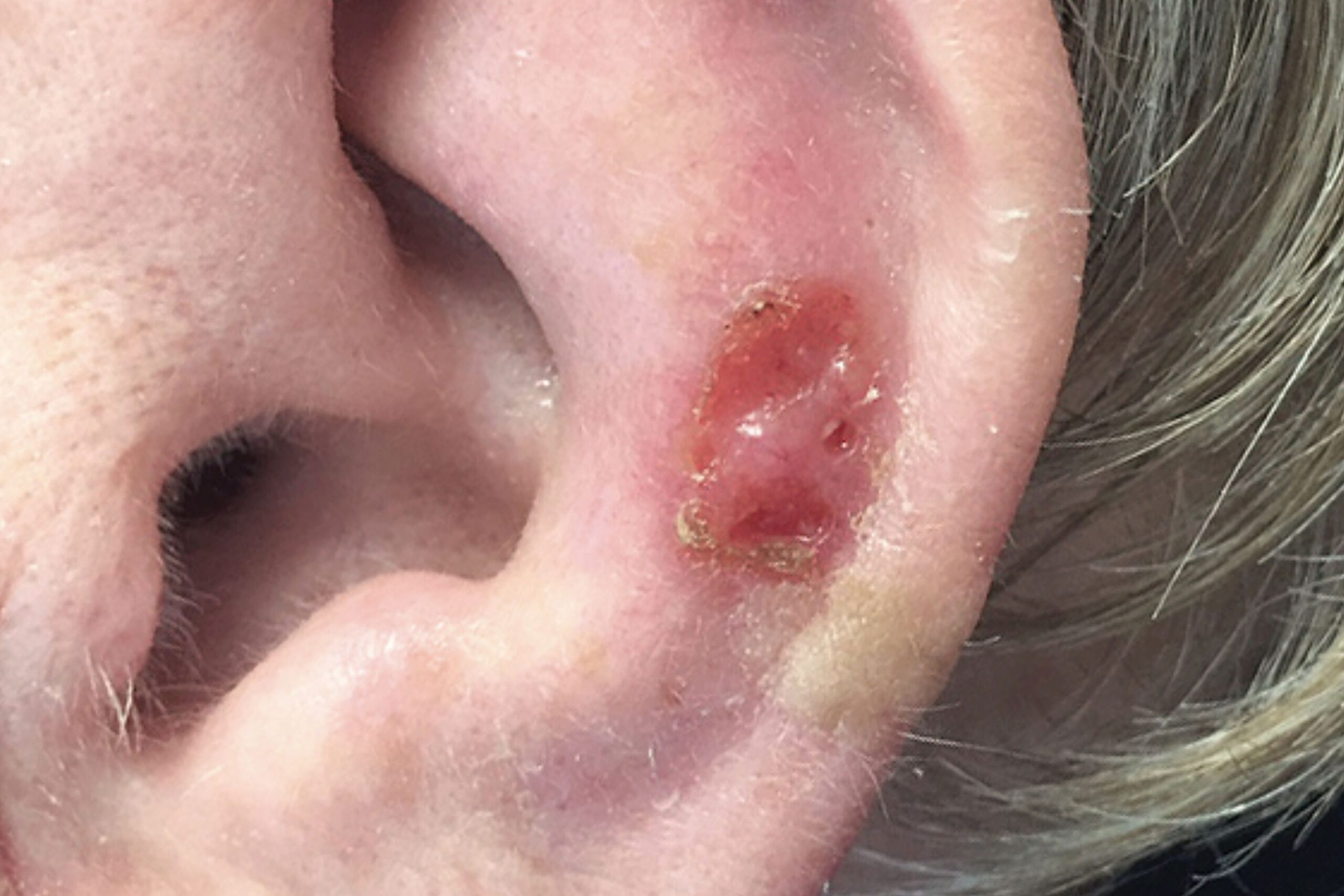
Risk Factors
- Sun Exposure: Just like BCC, SCC is strongly linked to UV radiation exposure, particularly from the sun.
- Fair Skin: People with fair skin are more likely to develop SCC.
- Pre-existing Skin Conditions: Certain skin conditions, such as actinic keratosis, can increase the risk of SCC.
- Weakened Immune System: Those with a compromised immune system, including organ transplant recipients, are at a higher risk.
Symptoms
SCC typically appears as a firm, red nodule or a flat, scaly, or crusted lesion. It may bleed or form an ulcer, especially in advanced cases. SCC is most commonly found on sun-exposed areas, such as the face, ears, neck, and hands, but it can occur anywhere on the body.
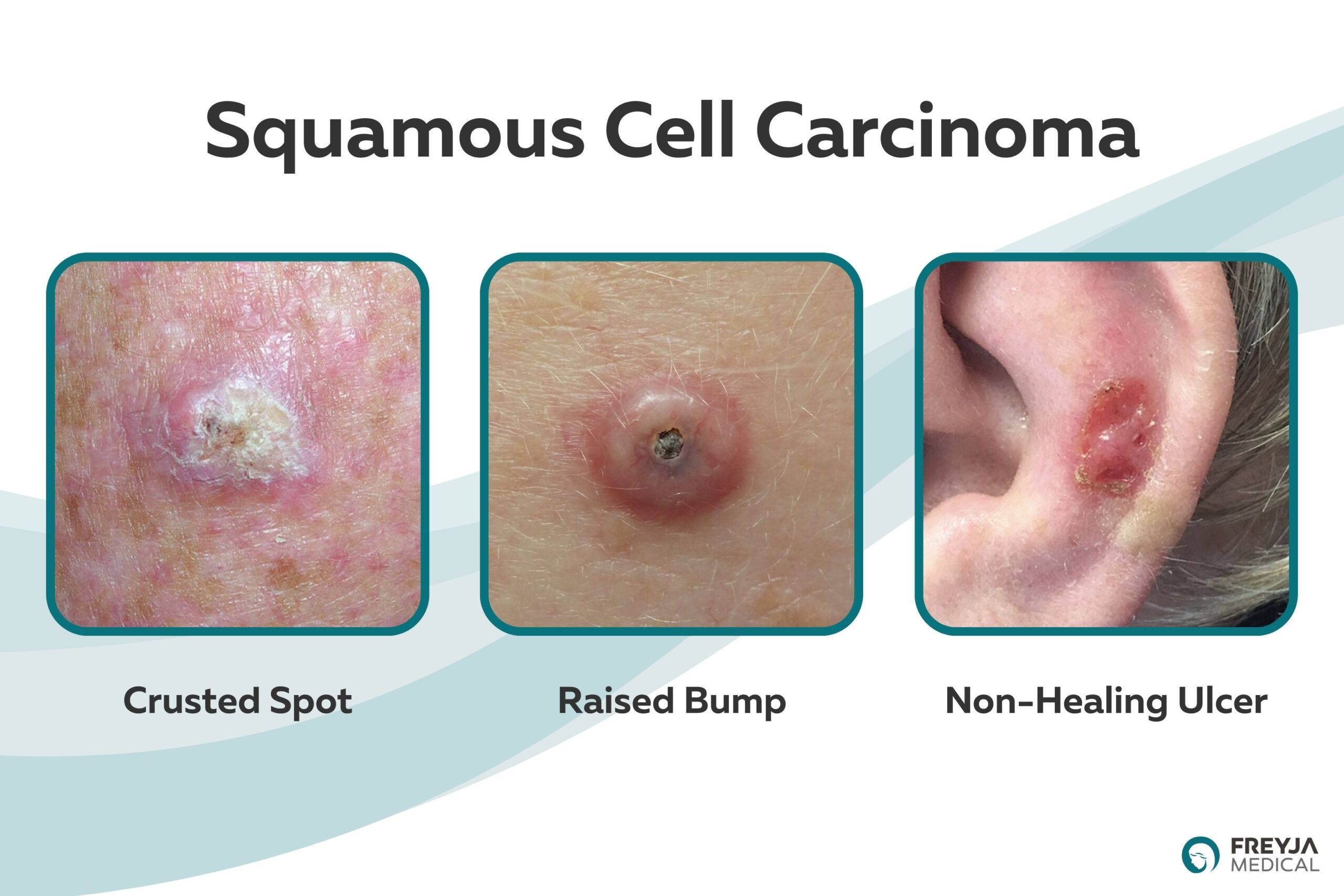
Treatment
Treatment for SCC usually involves surgical removal of the tumour, which has a high success rate when caught early. Other treatments include radiation therapy, cryotherapy, and topical treatments. If the cancer has spread, chemotherapy or targeted therapies may be necessary.
Melanoma
What is Melanoma?
Melanoma is the most dangerous and aggressive form of skin cancer. While it accounts for a small percentage of skin cancer cases (about 4-5%), it is responsible for the majority of skin cancer-related deaths. Melanoma develops in melanocytes, the cells that produce melanin—the pigment that gives skin its colour. Unlike BCC and SCC, melanoma can occur anywhere on the body, even in areas that are not directly exposed to the sun.
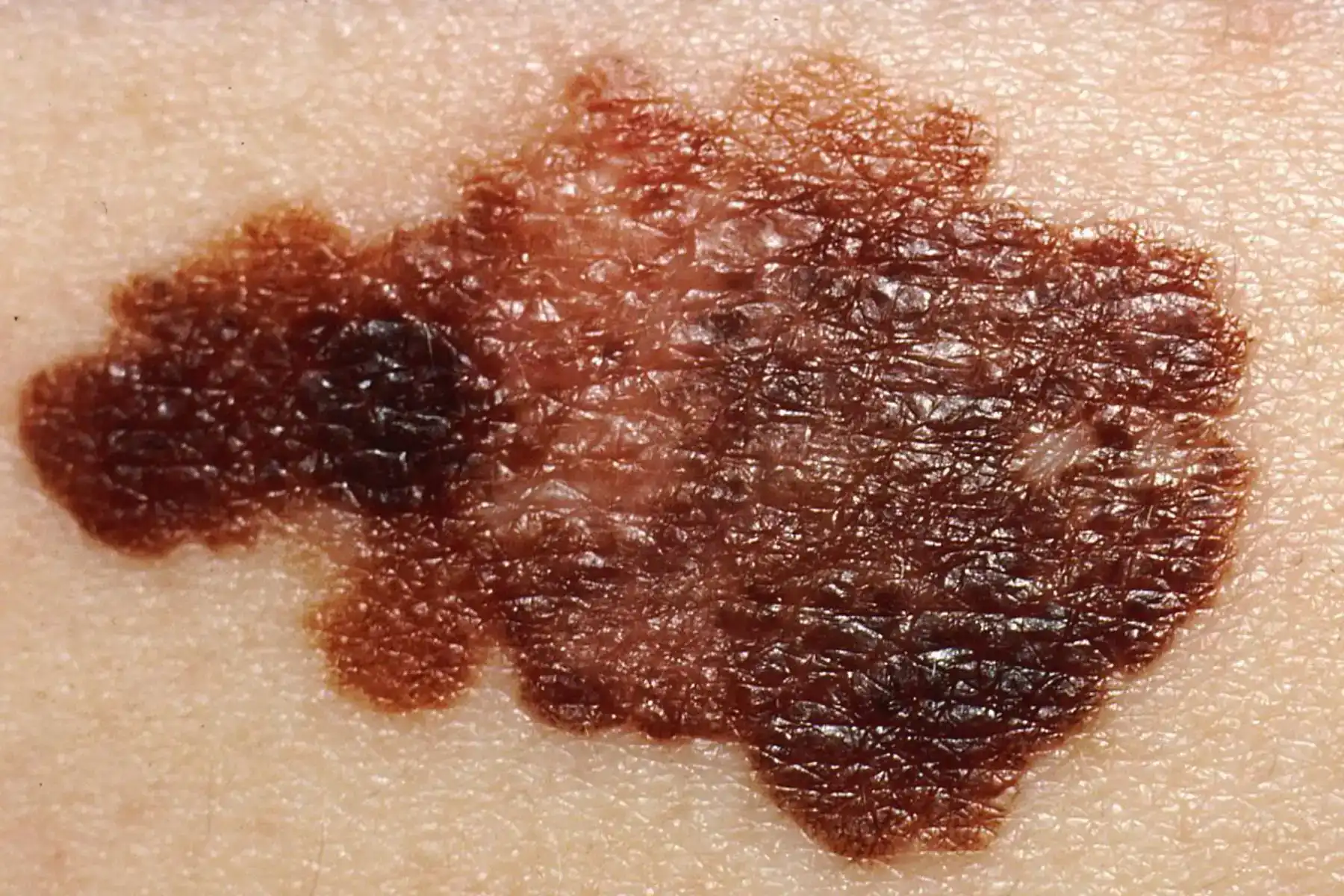
Risk Factors
- Sun Exposure: Severe sunburns, particularly during childhood, increase the risk of melanoma later in life.
- Fair Skin: People with fair skin, light eyes, and a tendency to burn rather than tan are at higher risk.
- Family History: A family history of melanoma increases the risk of developing the disease.
- Moles: Having a large number of moles or atypical moles (dysplastic nevi) increases the risk of melanoma.
Symptoms
Melanoma typically appears as a new mole or a change in an existing mole. It may have an irregular shape, uneven borders, and multiple colours. The size of the mole may also increase, and it may itch, bleed, or become painful. Melanoma can occur anywhere on the body, but it is most commonly found on the back, legs, and arms.

Treatment
Melanoma requires immediate attention, as it can spread quickly to other parts of the body if not treated in its early stages. Treatment usually involves surgical removal of the tumour. If the melanoma has spread, additional treatments such as immunotherapy, chemotherapy, or targeted therapies may be necessary.
How to Spot Skin Cancer: The ABCDE Rule
When checking your skin for signs of skin cancer, it’s helpful to use the ABCDE rule. This is a guide to look for changes in moles or spots that may indicate melanoma:
- A for Asymmetry: One half of the mole doesn’t match the other half.
- B for Border: The edges are irregular, ragged, or blurred.
- C for Colour: The mole has multiple colours or uneven pigmentation.
- D for Diameter: The mole is larger than 6mm in diameter (about the size of a pencil eraser).
- E for Evolving: The mole changes in size, shape, colour, or appearance.
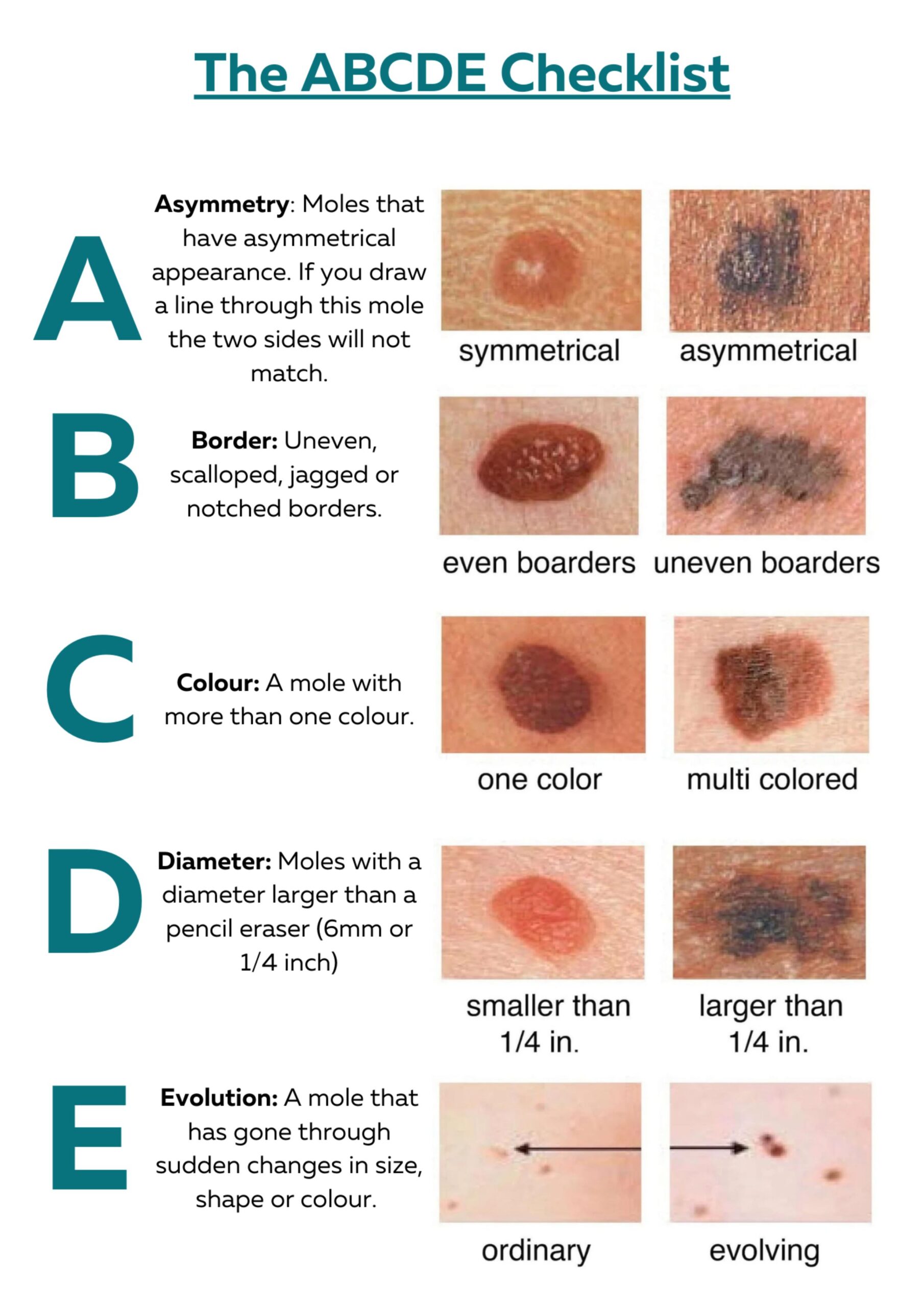
When to Seek Help
If you notice any of the above skin cancer signs and symptoms or have a mole or spot that changes over time, it’s essential to seek medical advice from a dermatologist. Early detection significantly improves the chances of successful treatment, especially for melanoma.
Prevention: Protecting Your Skin
While you cannot entirely eliminate your risk of skin cancer, there are several steps you can take to protect your skin:
- Avoid Tanning Beds: Tanning beds increase your risk of developing skin cancer.
- Wear Sunscreen: Apply a broad-spectrum sunscreen with an SPF of at least 30 every day, even on cloudy days.
- Seek Shade: Stay in the shade, especially during peak sunlight hours (10 a.m. to 4 p.m.).
- Wear Protective Clothing: Cover your skin with clothing, hats, and sunglasses when outdoors.
- Get Regular Skin Checks: Schedule regular skin checks with a dermatologist, especially if you have a history of sunburns, fair skin, or a family history of skin cancer.

Conclusion
Skin cancer is a serious condition, but it is also highly preventable and treatable when detected early. Basal cell carcinoma and squamous cell carcinoma are the most common types, with a generally good prognosis, while melanoma is the most dangerous and requires prompt treatment.
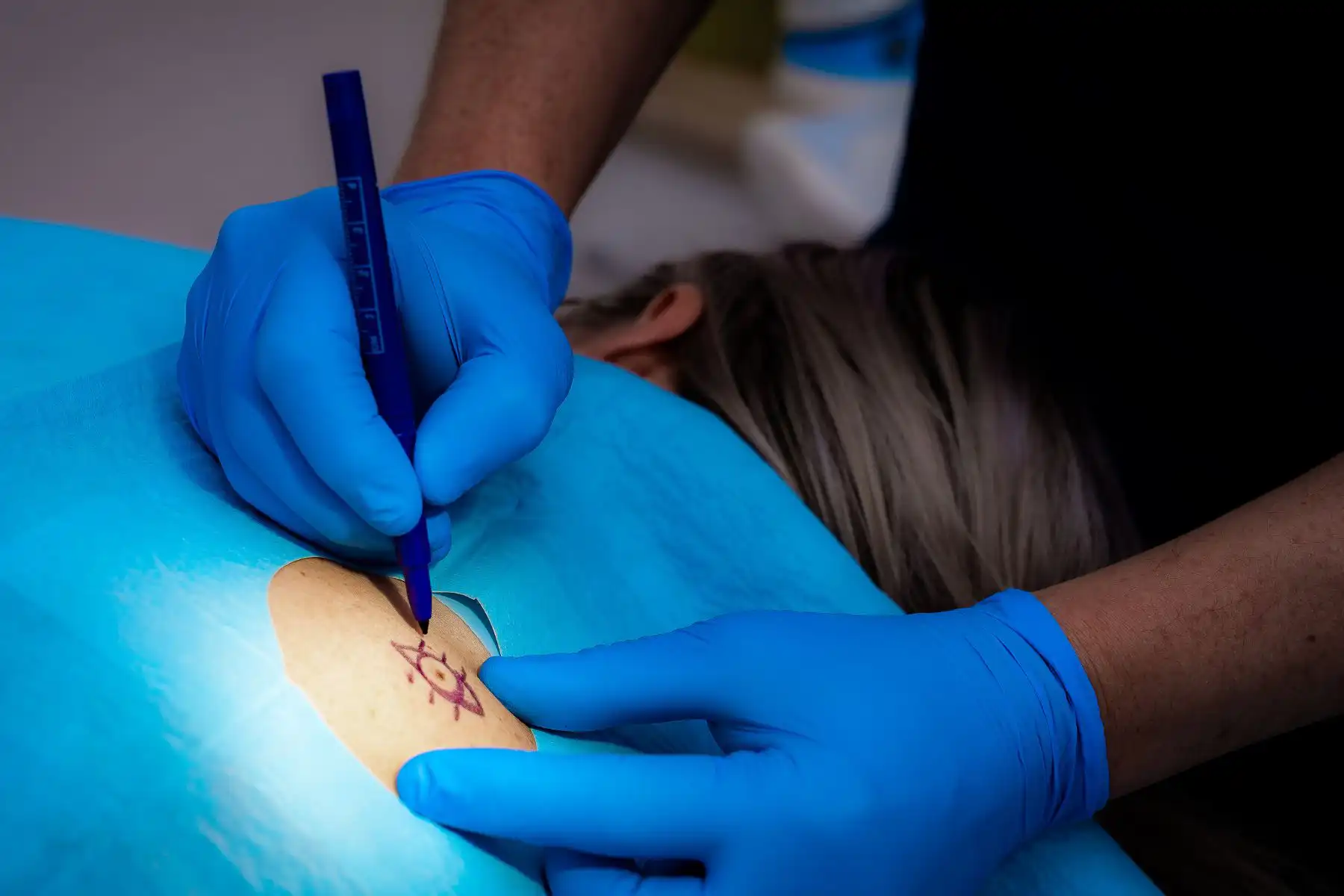
Regular skin checks and practising sun safety can go a long way in preventing skin cancer. If you notice any changes to your skin or moles, don’t hesitate to seek professional advice. Understanding skin cancer signs and symptoms is vital for early detection and effective treatment.

At Freyja Medical, our expert dermatologists are here to help you with any concerns about your skin health.
How to Book Your Consultation
For more information on our dermatology services or to schedule a consultation, contact us at 01978799688 or email [email protected].
Alternatively, you can book an appointment online by clicking here.



